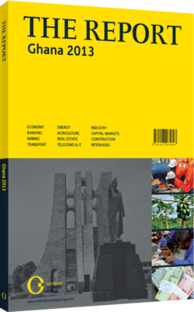Engineering change: Implementing an efficient health care model through policy reform and fiscal decentralisation
As the Ghanaian health care sector grapples to absorb a rising number of new patients each year, the government has made a push for decentralisation. For the most part, this is aimed at accelerating the transfer of responsibility for provision from the central government to the country’s 10 regions and 216 districts. Though administrative and fiscal decentralisation was advanced after establishing the Ghana Health Service (GHS) in 1996 and National Health Insurance Scheme (NHIS) in 2004, and the benefits of decentralisation – private sector growth, economic development and increased efficiency – would enhance the level of health care in Ghana, the process still faces a number of challenges.
JOINED UP AUTHORITY: One of the biggest obstacles is the sheer size and scope of the health care system, which is troubled by agency overlap. Confusion remains over which entities – the GHS in Accra, regional health administrations (RHA), district health administrations (DHA) or district assemblies – are responsible for which function of health care provision. “If someone is employed by the Ministry of Health (MoH) at the present time, where do they fall under decentralisation? In which region and in which district? The first problem is always determining, where do people belong?” Ebenezer Opoku, head of research at Ghana’s Institute for Health Policy Research, told OBG. Suffering from fragmentation, low effectiveness of spending, and a mismatch between plans, budgets, funding disbursement and financial reporting, decentralisation reforms will likely take many years to bear fruit, despite new plans announced in 2013.
STRUCTURE: District assemblies have a district medical officer and a social sectors committee, on which the GHS’s district director of health services sits. The bodies receive financial resources through a district assembly common fund (DACF), a revenue pool set aside by the central government and distributed to all districts in the country. Perhaps the most significant recent decentralisation reform came about in 2003/04, with the creation of the NHIS, the same year as an influential policy paper, The National Decentralisation Action Plan, was published. Opoku said the establishment of a broad national insurance scheme was a positive development for decentralisation, because it delegated insurance provision to regional and district governments. “In my perspective, the first real approach was decentralising the financial aspect to the NHIS, because the NHIS is a district-wide mutual health insurance scheme. Subsequently, the implementation of insurance is by the primary health care provider within the locality of the district, giving districts greater autonomy over their service provision,” he said. However, funding problems with the NHIS arose within its first six years of operation, and dwindling resources have put the scheme’s future in doubt.
FINANCES: The government tried to address the funding gap in 2007, when a policy review analysed progress towards decentralisation and defined a new implementation plan for decentralisation reforms. The report recommended a substantial increase in the allocation of resources to local government, amounting to 7.5% of GDP as a minimum target, and argued that a boost to the DACF would give local health authorities more control over human resources and budget allocation. In 2013 Ghana made available GHS1.15bn ($591.2m) for the DACF, about 3.6% of the estimated GDP.
Significant challenges remain in funding disbursement. According to a 2012 World Bank report titled “Decentralisation and Governance in the Ghana Health Sector,” MoH spending on district-level facilities amounted to 50% of ministry funding between 2007 and 2010, placing Ghana among the world’s top countries in terms of fiscal decentralisation. But in fact, real fiscal decentralisation is limited in size and scope: more than 50% of district-level resources are spent by the central government on behalf of district offices, including staff payment and investment expenditures. District assembly spending is limited by centrally defined guidelines, and a 2007 Public Expenditure Tracking Survey found that 42% of DACF funds were retained at the central level.
You have reached the limit of premium articles you can view for free.
Choose from the options below to purchase print or digital editions of our Reports. You can also purchase a website subscription giving you unlimited access to all of our Reports online for 12 months.
If you have already purchased this Report or have a website subscription, please login to continue.

